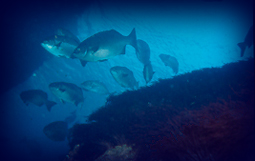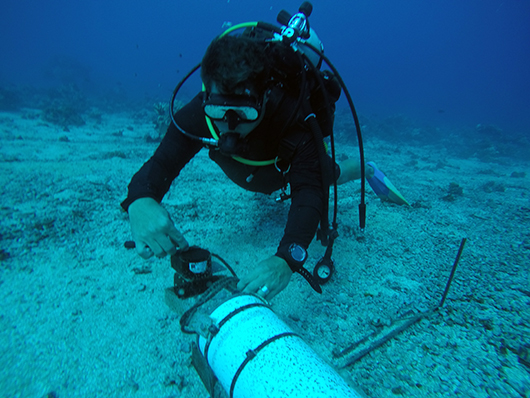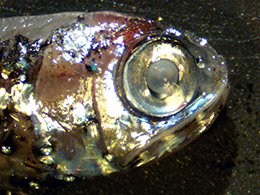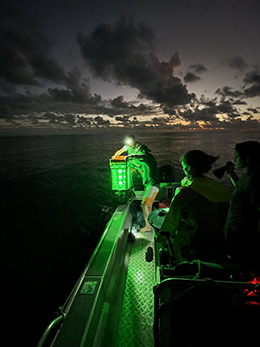
The Shima LabSTUDYING LIFE HISTORIES AND POPULATION DYNAMICS IN THE SEA |
Shining a light on lanternfishes......to reveal hidden linkages between ecosystemsLanternfishes are among the world’s most abundant vertebrates and likely the most common fishes in New Zealand waters. So named for their mastery of bioluminescence, they are primary prey for many important species, and their potential fishery biomass exceeds all other existing fisheries combined. How might lanternfishes shape ocean productivity, marine life histories, and carbon sequestration? How do lanternfishes contribute to the global carbon cycle? Do lanternfishes fuel the ‘biological pump’ directly through their metabolism of surface-derived carbon (i.e., do they digest and egest at depth, or only near the sea surface)? How do metabolic rates of lanternfishes vary with environmental conditions (e.g., migration routes that span ~25˚C range in tropics vs ~10˚C range in central New Zealand; and across similar variation in oxygen clines)? What drives lanternfish migrations, and do all individuals migrate every night? How do lanternfishes shape life histories, population dynamics, and productivity in coastal ecosystems? Are lanternfishes important predators of coastal fish larvae? Do they elicit antipredator responses in coastal fish larvae? How are life-history traits and replenishment dynamics of coastal species linked with lanternfish migrations? Funded by a Marsden grant, new research from March 2024...Our approach: We will study lanternfishes in New Zealand and the wider Pacific to test hypotheses that their effects vary with environmental conditions (e.g., depth of thermocline, water clarity, oxygen availability). We will leverage marine labs proximate to deep water (and migrating lanternfishes), including a field station that is unique in the world for its access to a deep-water source (a sea water air conditioning system) that supplies the lab with seawater drawn from a depth of 900m and allows us to maintain and study lanternfishes. We will measure rates of respiration, digestion, and egestion in metabolic chambers and across temperature and oxygen gradients. We will test behavioural preferences and eco-physiological responses using a modified shuttle-box, and we will evaluate otolith microstructure and oxygen stable isotopes in otoliths of lanternfishes to infer frequency of vertical migrations. We will use DNA metabarcoding approaches to quantify lanternfish prey preferences. We will evaluate behavioural responses of coastal fish larvae to lanternfish cues using infrared videography and motion tracking. We will quantify relationships between moonlight, lanternfish migrations (using acoustics), larval fish growth histories (reconstructed from otoliths), and replenishment patterns in the field. Collectively, our work will clarify the key role of lanternfishes as a driver of deep-ocean carbon sequestration, and of replenishment and biodiversity patterns in shallow coastal ecosystems. Key Collaborators
Media coverage / popular articles
Servicing our AZFP, which quantifies acoustic backscatter and enables us to infer movements of lanternfishes and other organisms. |
Lanternfish collected from Tetiaroa, French Polynesia. |
|
Sampling lanternfish 800m off the reef at Tetiaroa, French Polynesia. |
||
Seawater air conditioning system at Tetiaroa, supplying the lab with water drawn from 900m depth. |
||
Return to Research index
|
||







